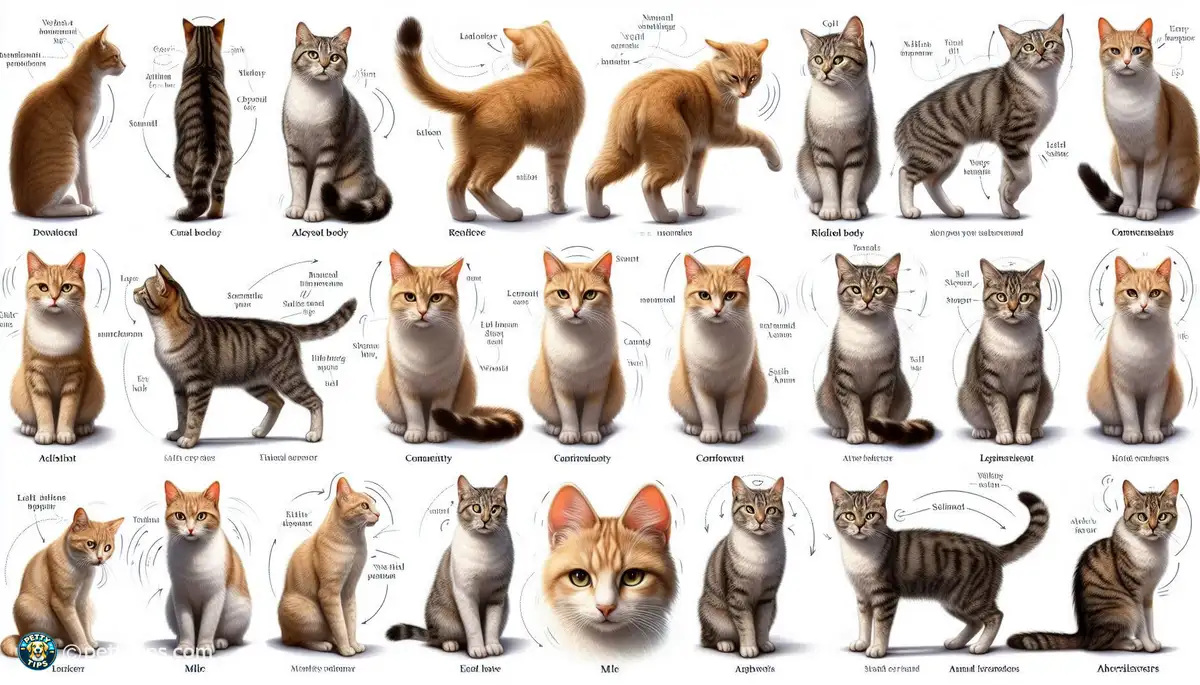- Home
- Cat Behavior
- Decoding Cat Body Language: A Guide to Socialization
Decoding Cat Body Language: A Guide to Socialization

The Importance of Body Language in Feline Communication
Understanding cat body language is akin to deciphering a subtle yet richly expressive form of communication. Cats, as inherently solitary creatures, rely heavily on body language to convey their emotions, intentions, and boundaries. From the flick of a tail to the position of their ears, every movement speaks volumes about their state of mind. Mastering the art of interpreting these signals is fundamental to building a strong bond with your feline companion.
Key Components of Cat Body Language
To comprehend cat body language effectively, it's essential to familiarize yourself with its core components. Pay close attention to their posture, facial expressions, tail movements, and vocalizations. Each element provides valuable insights into your cat's emotional state and can help you navigate social interactions more smoothly. By honing your observation skills, you'll be better equipped to decode the nuanced language of cats.
The Role of Socialization in Deciphering Cat Body Language
Socialization plays a pivotal role in shaping a cat's ability to communicate effectively through body language. Cats that have been properly socialized from a young age tend to exhibit more confident and relaxed demeanor. On the other hand, cats with limited social exposure may display signs of fear or aggression in unfamiliar situations. Understanding the influence of socialization on cat behavior is crucial for interpreting their body language accurately.
Interpreting Posture and Gestures
Reading the Language of Posture
A cat's posture offers valuable clues about their current emotional state and level of comfort. An upright posture with relaxed muscles indicates a content and confident cat, while a hunched stance with tense muscles suggests anxiety or defensiveness. Observing changes in posture can help you gauge how your cat is feeling and respond accordingly to ensure their well-being.
Decoding Facial Expressions
Although cats are not as expressive as dogs, their facial expressions still convey a wealth of information. Dilated pupils, for instance, may indicate excitement or fear, while narrowed eyes can signal aggression or displeasure. Pay attention to subtle changes in facial expression, such as flattened ears or twitching whiskers, to gain insight into your cat's emotional state and intentions.
Understanding Tail Movements
The tail serves as a vital tool for feline communication, with different movements conveying distinct messages. A relaxed, gently swaying tail typically indicates contentment, whereas a puffed-up tail suggests fear or agitation. Tail position also plays a significant role, with a high, erect tail signaling confidence and curiosity, while a tucked tail signifies submission or anxiety.
Navigating Vocalizations and Sounds
Deciphering Cat Vocalizations
While cats are not as vocal as some other pets, they still use vocalizations to communicate their needs and desires. Meowing, purring, hissing, and growling are among the most common vocalizations, each serving a unique purpose. Pay attention to the pitch, volume, and frequency of your cat's vocalizations to gain insight into their mood and intentions.
Responding to Purring
Purring is perhaps one of the most enigmatic sounds in the feline repertoire, often associated with contentment and relaxation. However, cats may also purr when in pain or distress, making it essential to consider the context in which the purring occurs. By observing your cat's body language alongside their purring, you can better understand the underlying emotions driving this comforting sound.
Addressing Hissing and Growling
Hissing and growling are defensive vocalizations typically associated with fear or aggression. When confronted with a perceived threat, cats may emit these sounds as a warning signal, indicating their readiness to defend themselves if necessary. Understanding the circumstances that trigger hissing and growling can help you defuse tense situations and promote a sense of security for your cat.
Building Trust Through Positive Interactions
Creating a Safe and Supportive Environment
Establishing a nurturing environment is essential for fostering trust and confidence in your cat. Provide plenty of hiding spots, elevated perches, and interactive toys to encourage exploration and alleviate stress. Additionally, maintain a consistent routine and approach interactions with patience and sensitivity to build a strong foundation of trust with your feline companion.
Using Positive Reinforcement Techniques
positive reinforcement is a powerful tool for shaping desirable behaviors and strengthening the bond between you and your cat. Rewarding desired behaviors, such as using a scratching post or using the litter box, with treats or praise reinforces these actions and encourages repeat performance. By focusing on positive interactions, you can create a harmonious living environment where your cat feels safe and secure.
Respecting Boundaries and Individual Preferences
Every cat has unique preferences and boundaries when it comes to social interaction. Pay attention to your cat's cues and respect their need for personal space and solitude. Avoid forcing interactions or overwhelming them with attention, as this can lead to stress and anxiety. By honoring your cat's autonomy and preferences, you can cultivate a trusting and mutually rewarding relationship over time.
